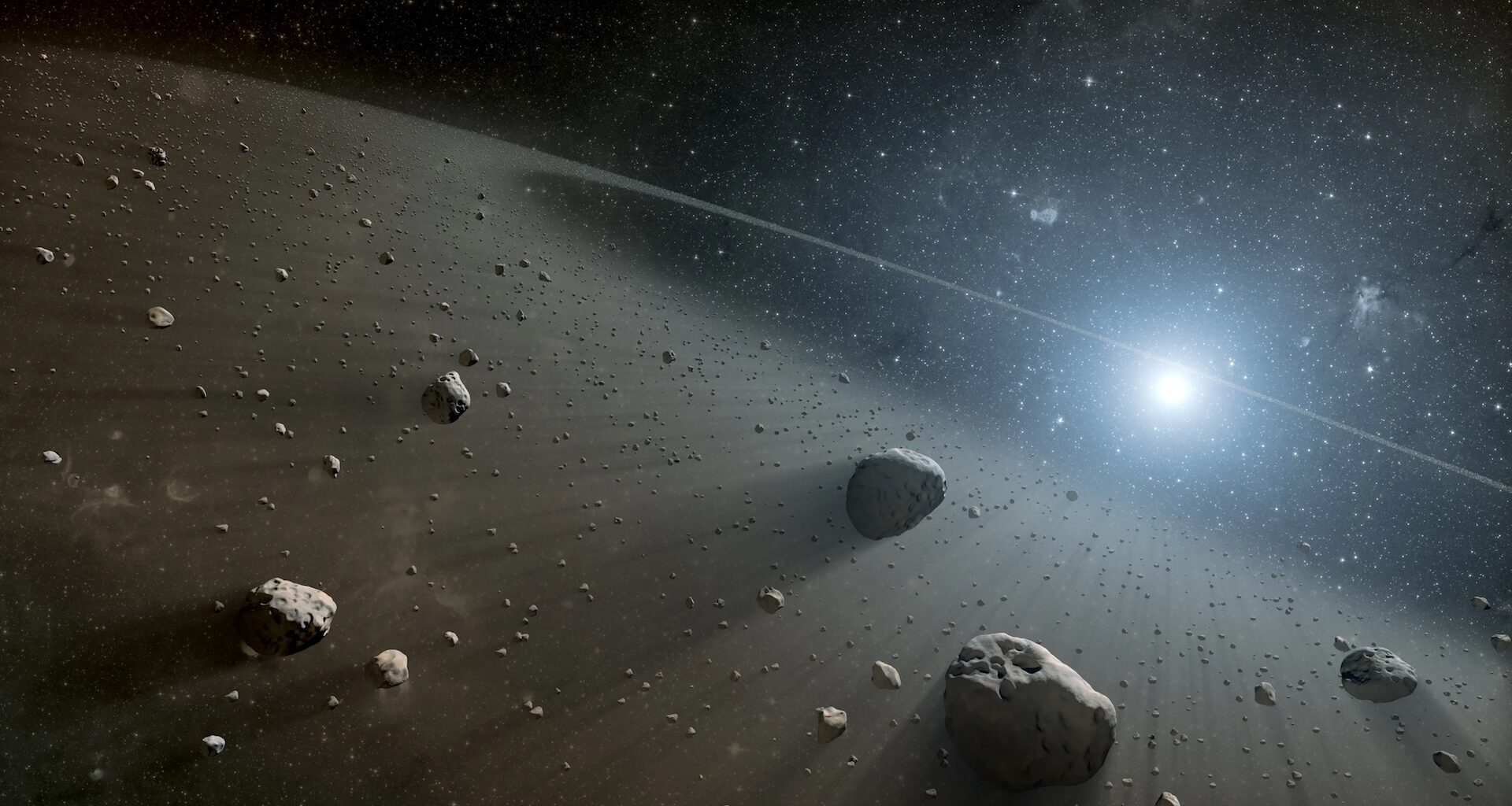Orbiting between Mars and Jupiter is an enormous ring of space rocks. The region, known as the asteroid belt, is home to an estimated 1.9 million asteroids that are larger than 1 kilometer in diameter. This makes up the vast majority of the solar system’s space rocks.
The belt, which marks the boundary between the inner rocky planets and the outer gas giants, is as old as the solar system itself. It formed from material that was present during the early formation of our star system’s planets.
Out of all the planets, Jupiter has the greatest impact on the asteroid belt. Due to its enormous size, the gas giant’s gravitational force occasionally pulls large space rocks out of the belt. That’s not the only impact it has, though. Jupiter’s gravitational pull also hurls enormous rocks around within the asteroid belt.
According to a new study, this effect is gradually pulverizing the asteroids that make up the belt. As they smash into each other, they are reduced to smaller pieces. As a result, the asteroid belt may be on course to completely disappear.
The asteroid belt’s slow demise
The new study, published in the preprint server arXiv, indicates that the asteroid belt is losing roughly 0.0088% of its mass every million years.
The team, led by planetary scientist Julio Fernández of the Universidad de la República in Uruguay, focused on the collisionally active portion of the asteroid belt. As a report from Gizmodo explains, this is the name given to the portion of the belt made up of asteroids small enough to be involved in frequent collisions and dynamical ejections.
According to Fernández and his colleagues’ calculations, the asteroid belt lost roughly a third of its mass over the past 3.5 billion years.
The team also estimates that 20 percent of asteroids escape into the inner and outer solar system. The other 80 percent, meanwhile, are simply pulverized and ground into cosmic dust within the asteroid belt. This dust finds its way into the zodiacal cloud – a thick dust cloud orbiting the Sun within the inner solar system.
Planetary defense implications
The scientists do point out that the death of the Sun, in about 5 billion years, will destroy the asteroid belt before it is able to fully vanish. This is because its rate of depletion is slowing over time, as fewer rocks lead to fewer collisions.
The findings are important, though, as they provide insight into the rate at which asteroids leave the asteroid belt. These could, of course, make their way toward our planet, meaning the data is important for planetary defense.
In 2022, NASA’s DART spacecraft smashed into an asteroid moonlet called Dimorphos in humanity’s first-ever planetary defense test. That test showed that we could alter an asteroid’s trajectory if one were found to be on a collision course with Earth.
Scientists have also hypothesized that a large portion of the world’s water comes from asteroids, and that the building blocks of life came to Earth on space rocks. The team’s data sheds new light on the universe’s ancient history, allowing scientists to better investigate the role asteroids have played in shaping our planet.

